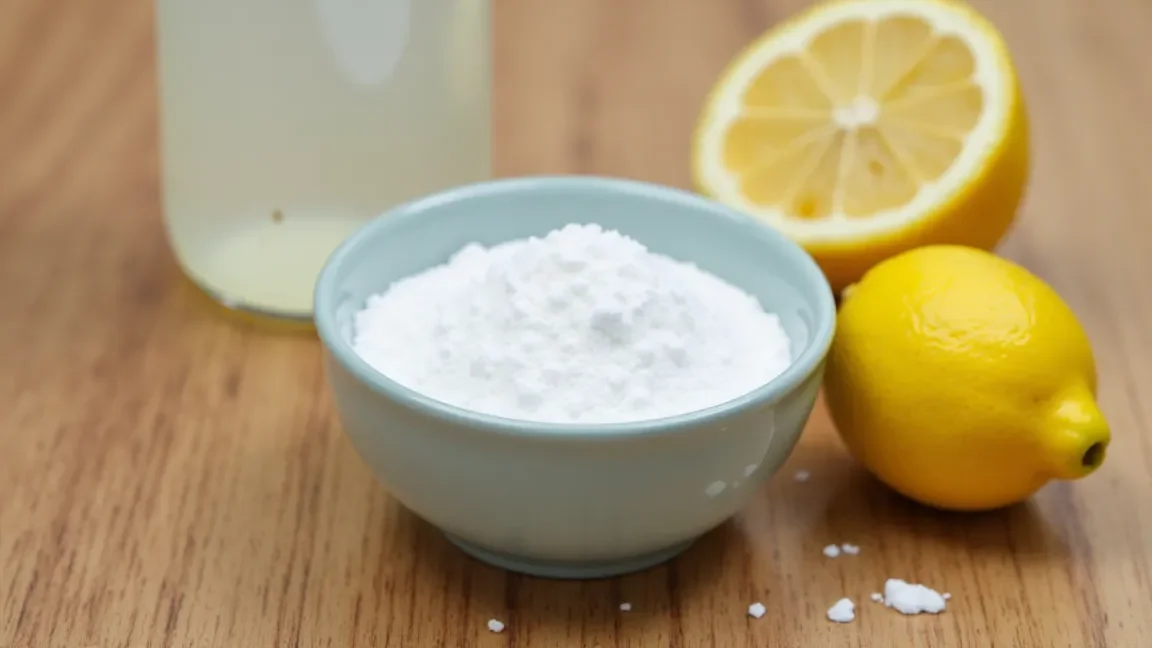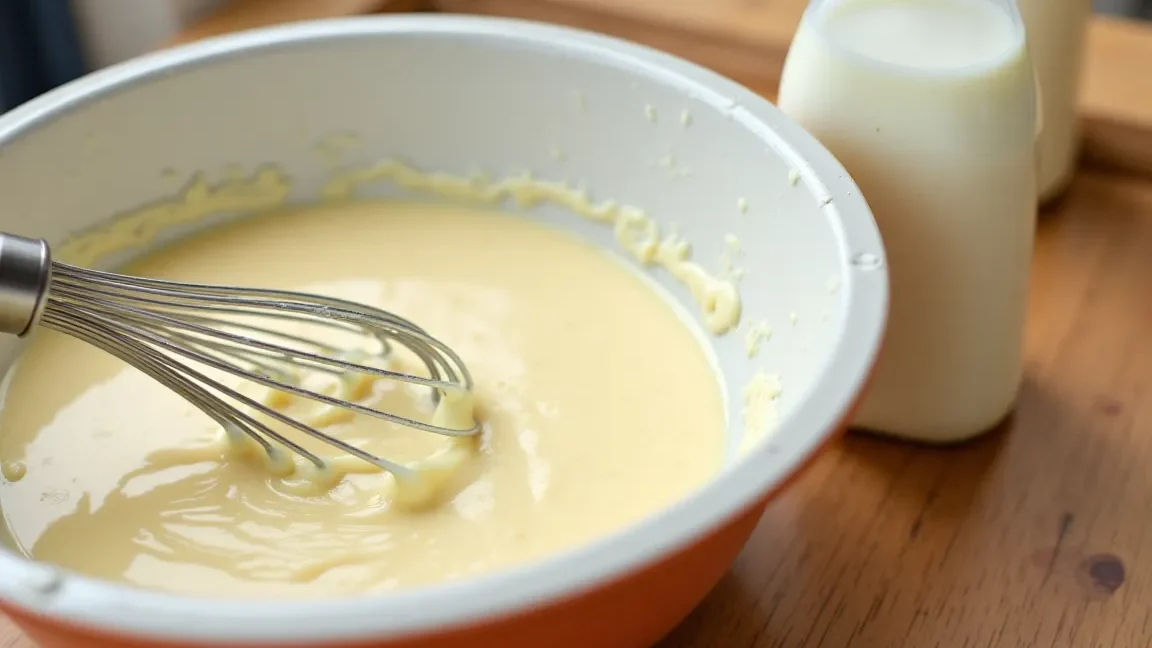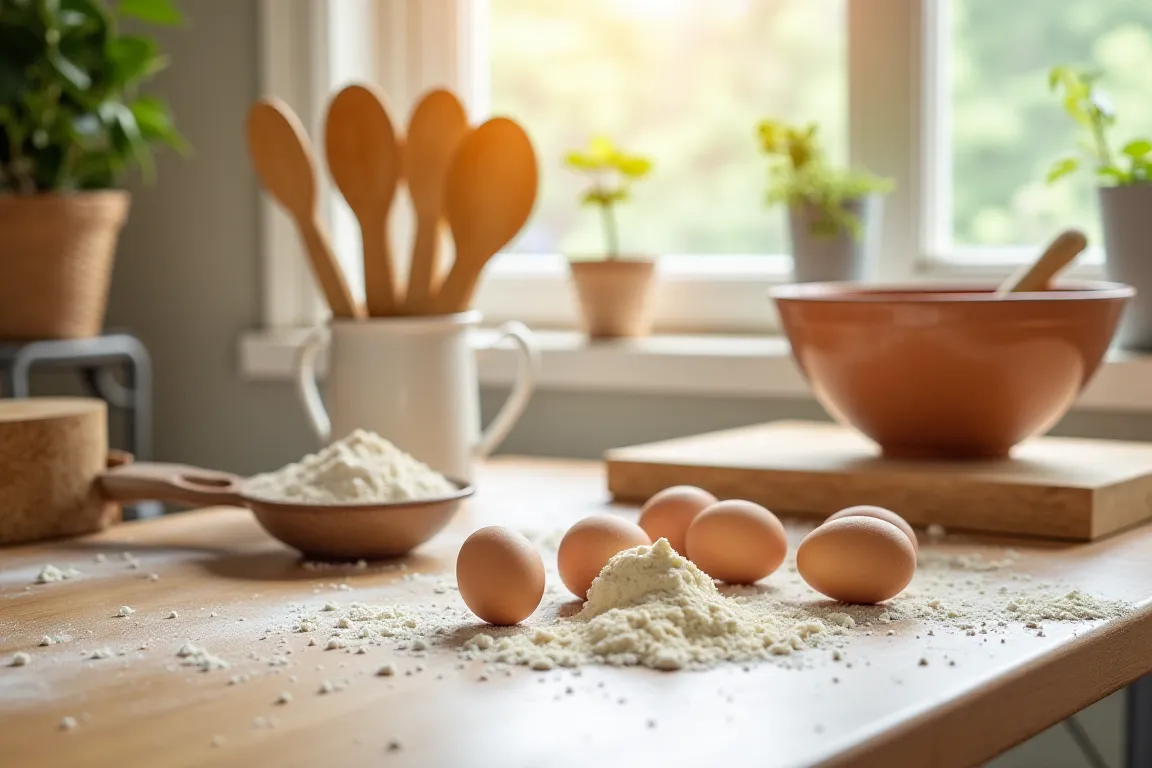Table of Contents
What to Use If You Don’t Have Baking Powder? Have you ever started a baking project to realize you’re out of this essential ingredient? It’s a common frustration, but don’t worry; your baking dreams don’t have to crumble. Baking powder is a kitchen staple that helps cakes rise, muffins fluff, and pancakes stay light.
You can turn to various substitutes to achieve similar results when it’s missing. This guide will walk you through everything you need to know about baking powder, why it’s essential, and the best alternatives to use in a pinch.
Whether you’re baking cookies, bread, or muffins, there’s always a solution. So, let’s dive in and uncover the best ways to substitute baking powder without compromising your recipe.
Understanding Baking Powder
Components of Baking Powder
Baking powder is a chemical leavening agent that creates gas bubbles to increase your baked goods. It’s made from three primary ingredients:
- Baking Soda: The active ingredient responsible for releasing carbon dioxide gas.
- Cream of Tartar: An acid that reacts with baking soda.
- Cornstarch: A filler to stabilize the mixture and prevent clumping.
When combined with moisture and heat, these components create a light, fluffy texture in baked goods.
Why Baking Powder is Essential
Baking powder ensures your recipes rise properly, giving baked goods their soft and airy structure. Without it, your creations may be dense, flat, or crumbly. Substitutes must replicate this leavening function, which usually involves balancing an acidic and alkaline component.
Common Substitutes for Baking Powder
When you find yourself without baking powder, don’t panic several easy substitutes can save your recipe. Most alternatives require a combination of ingredients to mimic the leavening effects of baking powder. Let’s explore the most reliable options.

Baking Soda and Acid Combinations
Baking soda, the primary ingredient in baking powder, is a natural place to start. However, baking soda alone won’t work; it needs an acidic ingredient to activate its leavening properties.
Baking Soda and Lemon Juice
Lemon juice is a quick and natural acid that pairs perfectly with baking soda. Follow these steps for an adequate substitution:
- Use 1/4 teaspoon of baking soda and 1/2 teaspoon of lemon juice to replace 1 teaspoon of baking powder.
- Mix the baking soda directly into your dry ingredients.
- Add the lemon juice to your wet ingredients right before combining them.
This combination works best in recipes like cakes and muffins, where a slight citrus flavour can enhance the final product.
Baking Soda and Vinegar
Vinegar is another pantry staple that works well with baking soda. Here’s how to use it:
- Replace one teaspoon of baking powder with 1/4 teaspoon baking soda and 1/2 teaspoon of white or apple cider vinegar.
- Add the vinegar to the wet ingredients.
This substitution is great for recipes with a neutral flavour profile, such as pancakes or plain muffins.
Baking Soda and Cream of Tartar
If you have cream of tartar, you can easily make a homemade baking powder substitute. Cream of tartar provides the necessary acid for the reaction.
- Mix 1/2 teaspoon of cream of tartar with 1/4 teaspoon of baking soda to replace 1 teaspoon of baking powder.
- Combine it with your dry ingredients as you would with store-bought baking powder.
This is one of the most reliable substitutions, as it closely mimics commercial baking powder.
Self-Rising Flour
Self-rising flour is pre-mixed with baking powder and salt, making it an excellent stand-in for recipes that call for regular flour and baking powder.
- Substitute the all-purpose flour in your recipe with equal self-rising flour.
- Skip any additional baking powder or salt.
This option works best for biscuits, pancakes, or quick breads.
Unconventional Substitutes
If you don’t have traditional ingredients like baking soda or cream of tartar, there are still some creative alternatives to consider. These might not be your first options, but they can work well in specific recipes.
Club Soda
With its natural carbonation, club soda can act as a leavening agent in recipes that don’t require heavy lifting. Here’s how to use it:
- Replace part of the liquid in your recipe with club soda.
- Add about 1/4 cup of club soda to the batter for every teaspoon of baking powder.
This works best in pancakes, waffles, and light batters, as the carbonation introduces air into the mixture for a fluffy texture.
Buttermilk
Buttermilk is naturally acidic, making it a great option to pair with baking soda for leavening. Follow these steps:
- Use 1/2 cup of buttermilk and 1/4 teaspoon baking soda to replace one teaspoon of baking powder.
- Reduce the liquid in the recipe by 1/2 cup to maintain the proper consistency.
Buttermilk adds a subtle tanginess to baked goods, enhancing the flavour of items like cakes, muffins, and biscuits.
Yoghurt
Plain yoghurt works similarly to buttermilk due to its acidity. To use yoghurt as a substitute:
- Combine 1/2 cup of plain yoghurt with 1/4 teaspoon baking soda for every baking powder needed.
- Reduce the liquid used in the recipe by 1 cup.
This option is excellent for recipes like quick breads and muffins, where a creamy texture is desirable.
Sour Milk
If you don’t have buttermilk or yoghurt, souring regular milk with vinegar or lemon juice is an easy alternative.
- Add one tablespoon of vinegar or lemon juice to 1 cup of milk. Allow it to rest for 5 to 10 minutes before it curdles.
- Use soured milk instead of buttermilk and follow the same substitution ratio.
This versatile approach works in most recipes that call for a leavening agent.
Tips for Baking Without Baking Powder
Baking without baking powder might seem challenging, but you can create delicious, fluffy baked goods with the right strategies. Here are some practical tips to ensure your substitutions work seamlessly.
Balancing Acidity and Flavor
When substituting baking powder, the acid and alkaline components must work together to achieve the desired leavening effect. Here’s how to maintain flavour balance:
- Choose the Right Acid: Use a neutral acid like vinegar or cream of tartar if you don’t want to alter the taste. For a tangy twist, lemon juice or buttermilk can enhance specific recipes.
- Adjust Sweetness: Acids like yoghurt or buttermilk can introduce a slight tang, so you may want to increase the sugar slightly in sweet recipes.
Understanding Recipe Chemistry

The structure and texture of your baked goods depend on the chemistry of the ingredients. Keep these points in mind:
- Moisture Balance: Liquid substitutes like buttermilk or club soda can affect the batter’s consistency. Reduce other liquids in the recipe accordingly.
- Mixing Technique: Combine wet and dry ingredients quickly after adding the substitute, as the leavening reaction starts immediately.
Testing and Adjusting Measurements
Substituting baking powder might require some experimentation. Here’s how to fine-tune your recipes:
- Start Small: Test the substitute in a small batch before committing to a full recipe.
- Measure Carefully: Too much or too little ingredients can reduce the texture or taste. Use precise measurements for consistent results.
- Observe the Results: If your baked goods are too dense or don’t rise enough, slightly increase the leavening substitute next time.
Timing is Everything
Some substitutes, like baking soda and vinegar, react quickly. To get the best results:
- Preheat your oven before mixing the batter to minimize delays.
- Work swiftly and bake immediately after combining wet and dry ingredients.
Recipes You Can Make Without Baking Powder
Baking without baking powder doesn’t mean compromising on deliciousness. With the proper substitutes, you can whip up a variety of baked goods that are just as delightful as their traditional counterparts. Here are some ideas and tips for making popular recipes without baking powder.
Pancakes Without Baking Powder
Who doesn’t love a stack of fluffy pancakes? Even without baking powder, baking soda and an acidic ingredient can achieve a soft and airy texture.
Ingrédients:
- 1 cup all-purpose flour
- 1/4 teaspoon baking soda
- 1/2 teaspoon vinegar or lemon juice
- 1 egg
- 1 cup milk
- 2 tablespoons sugar
- A pinch of salt
Instructions:
- Mix the dry ingredients (flour, baking soda, sugar, and salt) in a bowl.
- In a separate bowl, combine milk and vinegar or lemon juice. Allow it to sit for 5 minutes to make buttermilk.
- Add the egg to the wet mixture and whisk well.
- Mix dry and wet ingredients until well mixed.
- Cook on a hot, greased skillet until bubbles form, then flip and cook the other side.
Enjoy light, fluffy pancakes with your favourite toppings!
Cookies Without Baking Powder
Cookies don’t need much rise, so they’re perfect for experimenting with substitutes. Here’s how to make chewy cookies with baking soda and cream of tartar.
Ingrédients:
- 1 1/2 cups all-purpose flour
- 1/4 teaspoon baking soda
- 1/2 teaspoon cream of tartar
- 1/2 cup butter (softened)
- 1/2 cup sugar
- 1/2 cup brown sugar
- 1 egg
- 1 teaspoon vanilla extract
Instructions:
- Preheat your oven to 350°F (175°C).
- Cream the butter, sugar, and brown sugar in a bowl until fluffy. Add the egg and vanilla extract.
- In a separate bowl, mix the baking soda and flour along with the cream of tartar.
- Mix dry ingredients into the wet mix.
- Scoop onto a baking sheet and bake for 10-12 minutes or until the edges are golden.
These cookies will have a tender, chewy texture!
Muffins Without Baking Powder
Ingrédients:
Muffins rely heavily on leavening agents, but you can still achieve a soft, moist texture using baking soda and yoghurt.
- 1 3/4 cups all-purpose flour
- 1/2 teaspoon baking soda
- 1/2 cup plain yogurt
- 1/4 cup milk
- 1/2 cup sugar
- 1/3 cup vegetable oil
- 1 egg
- 1 cup blueberries (optional)
Instructions:
- Preheat your oven to 375°F (190°C). Line a muffin tin with paper liners.
- Whisk together the yoghurt, milk, sugar, oil, and egg in a large bowl.
- In a separate bowl, mix the baking soda and flour.
- Fold dry ingredients into a wet mix. If using, stir in the blueberries.
- Spoon the batter into the muffin tin, filling each cup 2/3 full.
- Bake for 18-22 minutes or until a toothpick inserted in the centre comes clean.
These muffins will be soft, tender, and perfect for breakfast or a snack.
Frequently Asked Questions (FAQ):
Can I Use Only Baking Soda?
No, baking soda alone cannot replace baking powder because it requires an acidic ingredient to activate its leavening properties. Without acid, baking soda will not produce the carbon dioxide gas needed to increase baked goods. Pair it with an acid like lemon juice, vinegar, or buttermilk for best results.
What Happens If I Skip Baking Powder Entirely?
If you skip baking powder and don’t use a substitute, your baked goods will likely turn out dense and flat. Baking powder provides the necessary lift and structure, so omitting it without a replacement can drastically alter the texture and appearance of your recipe.
Can I Use Yeast Instead of Baking Powder?
Yes, but only in specific recipes. Yeast works through fermentation rather than a chemical reaction, requiring rising time. While it’s ideal for bread or pizza dough, it’s unsuitable for quick recipes like cakes, cookies, or muffins relying on fast-acting leavening agents.
How Do I Store Homemade Baking Powder?
Homemade baking powder, made by combining baking soda and cream of tartar, should be stored in an airtight container in a cool, dry place. Use it within a few weeks for best results, as it may lose its potency over time. Label the container with the date and proportions for easy reference.
Is There a Gluten-Free Substitute for Baking Powder?
Yes! To make a gluten-free substitute, combine 1/4 teaspoon of baking soda, 1/2 teaspoon of cream of tartar, and 1/4 teaspoon of cornstarch (or arrowroot powder). This mixture can replace one teaspoon of baking powder and works well in gluten-free baking.
Can I Make Pancakes Without Baking Powder or Soda?
Absolutely! Use club soda or whipped egg whites as leavening agents. The carbonation in club soda will create a light texture, while whipped egg whites folded into the batter add airiness without the need for chemical leavening agents.
Conclusion
Running out of baking powder doesn’t have to derail your baking plans. With various substitutes available, you can still achieve the perfect rise in baked goods. By understanding the chemical reactions behind these substitutes and making precise adjustments, you can ensure your creations remain fluffy, flavorful, and delightful.
Explore more DIY solutions and recipe tips at Eager Recipes and experiment with creative substitutes in your kitchen today.
Happy baking!
